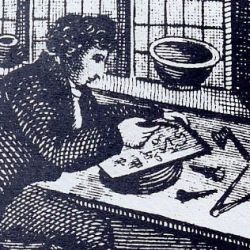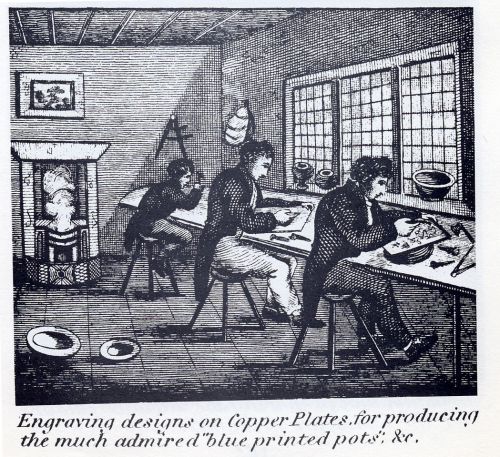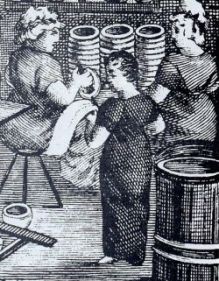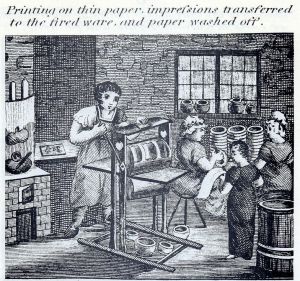- History
- Pottery
- Industry
Hot Press Printing
Thomas Battam worked as Art Director for Copeland's (formerly Copeland & Garrett, the manufactory that was once Spode). In 1851, he authored The Guide to the Great Exhibition of 1851, held at Crystal Palace. In the publication he described the engraving and transfer printing process extensively. It remains one of the best descriptions in print. Only the quality of the tissue paper used to transfer the designs had changed from the inception of transfer printing at Spode almost seventy years earlier. Battam wrote:
 | “The engraving is executed upon copperplates, and for ‘press’ printing is cut very deep, to enable it to hold a sufficiency of colour to give a firm and full transfer on the ware. |  |
"The printer’s shop is furnished with a brisk stove, having an iron plate upon the top, immediately over the fire, for the convenience of warming the colour while being worked, also a roller, press and tubs. “The printer has two female assistants called ‘transferrers’ and also a girl called a ‘cutter.’” “The copper plate is charged with colour, mixed with a thick boiled oil, by means of a knife and a ‘dabber,’ while held on the hot stove, for the purpose of keeping the colour fluid; and the engraved portion being filled, the superfluous is scraped off the copper with the knife, which is further cleaned by being rubbed with a ‘boss,’ made of leather.” |




